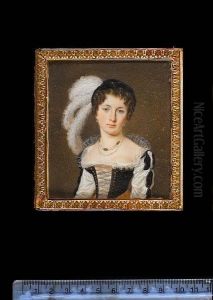Amelie, Nee Dautel Daubigny Paintings
Amélie, née Dautel Daubigny, was a notable French artist born in 1817. Though not as widely recognized as her male counterparts in the 19th-century art world, her contributions to the art scene, particularly in painting, were significant. Amélie was part of the Barbizon school, a movement that focused on realism and nature, and she was known for her landscapes and scenes of rural life. Her work, characterized by its delicate sensitivity to natural light and subtle rendering of the French countryside, provides a unique feminine perspective within the Barbizon movement, which was predominantly male.
Amélie married Charles-François Daubigny, another prominent figure in the Barbizon school, and their partnership fostered a creative synergy that was reflected in the quality and thematic focus of their work. The couple was deeply ingrained in the artistic community of their time, often engaging with other artists and intellectuals in Paris and Barbizon. Despite the challenges faced by women in the arts during the 19th century, Amélie managed to carve out a space for herself, exhibiting her works in various salons and exhibitions. Her ability to capture the essence of rural France, combined with a nuanced use of color and light, earned her respect among her peers and critics alike.
Amélie's legacy, though overshadowed by her husband and the more celebrated members of the Barbizon school, has been revisited in recent years, with art historians and critics acknowledging her contributions to the movement and the broader landscape of French art. Her paintings, which once hung in the shadow of her husband's works, are now recognized for their own intrinsic beauty and artistic merit. Amélie Daubigny died in 1888, leaving behind a body of work that continues to inspire and captivate audiences, offering a window into the pastoral beauty of 19th-century France through a distinctly feminine lens.

